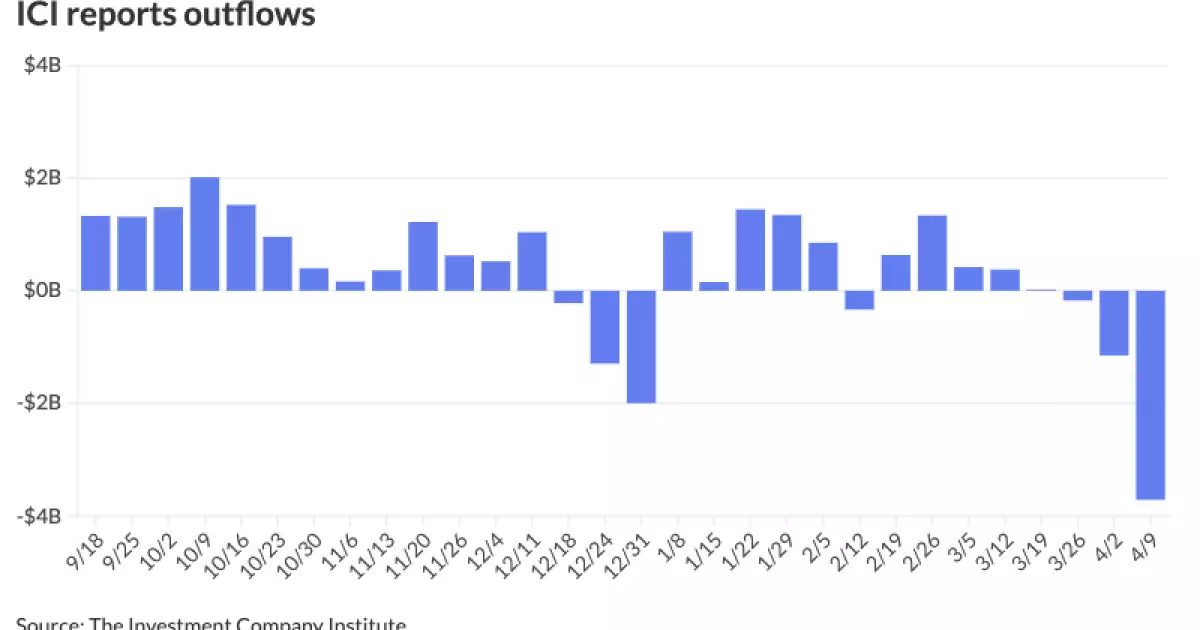The municipal bond market’s landscape is one that oscillates with the ups and downs of economic sentiment. Recently, we’ve witnessed slight firmness in municipal bonds, signaling a recovery phase as the extreme market volatility from previous weeks begins to ease. It’s a breath of fresh air amidst the chaos—an opportunity for investors looking to navigate a landscape fraught with uncertainty. As U.S. Treasury yields dipped and equities took a hit, the municipal market managed to regain some footing, with observably positive indicators. This trend prompts a critical reevaluation of current investment strategies surrounding municipal debt.
Despite wider economic concerns, the two-year municipal to Treasury yield ratio hovering around 80% suggests some relative stability. Ten-year bonds at approximately 82% indicate that there’s still a level of confidence among investors in government-backed securities, particularly as they seek refuge from riskier asset classes. This stability, however, begs the question: is the current municipal bond market genuinely sustainable or merely a temporary reprieve?
The Effect of Outflows and Inflows
Interestingly, the Investment Company Institute has reported significant outflows in recent weeks, totaling $3.714 billion for the week ending April 9, which follows a previous outflow of $1.15 billion. This trend raises concerns about investor sentiment and market liquidity. The substantial withdrawals from exchange-traded funds, especially after a week of positive inflows, reflect an intrinsic instability that could undermine confidence among long-term investment strategies.
Kim Olsan, a senior fixed income portfolio manager, has appropriately noted that competitive sales for high-quality municipal bonds saw strong levels recently. Bonds from North Carolina and Anne Arundel County fetched optimal pricing instead of the steep concessions witnessed the previous week. This marked improvement suggests that a “pool of bidders” is preparing to seize upon yield discrepancies, but will this translate to a more sustainable surge in bond purchases, or is it simply a fleeting moment in an otherwise shaky market?
Impact of Upcoming Issuances
The primary issuance landscape for municipal bonds appears somewhat optimistic, with hotly anticipated deals from Connecticut and Massachusetts set to exceed $1 billion. This issuance confidence is crucial; however, it comes with the caveat of heightened market volatility making it essential for investors to assess their risk tolerance carefully. Olsan’s assertion that upcoming issuance will be well-received echoes the underlying market sentiment of clarity and potential recovery.
Despite this optimistic outlook, the challenges of distribution loom large. While a more favorable yield set seems to attract investors, the risk remains that an influx of municipal bonds could flood a market still grappling with lingering uncertainties. The objective must be to balance new issuances with existing market conditions in ways that do not tilt the scales too far in favor of either extreme.
The Significance of Ultra-Short Yields
Compounding the dynamic landscape is the fluctuation in ultra-short yields. Olsan pointed out that these yields surged past 4.50% in response to money market fund redemptions approaching tax filing season. This scenario poses a dual threat—while enticing higher returns for investors who are in it for the long haul, such high yields may also lead to significant market corrections once the initial excitement dissipates.
Moreover, the recent spikes in one-year AAA MMD yields trading at an annual high of 3.45%—a notable bump compared to previous marks—serve as a critical barometer for assessing the attractiveness of munis against other investment opportunities. As the tax equivalent yields near 5% for top-tier buyers, this pushes the boundaries of municipal securities, circulating the discussion of whether they’re truly an advantageous asset for risk-averse investors.
Market Sentiment and Long-term Viability
Yet amidst these contrasting signals, one must not overlook the more substantial improvements in the yield curve. The data shows a necessary correction in the longer-end yields—a 110 basis point rebound off lows signifies not just a flicker of hope, but a clarion call for investors to reconsider their asset mix in favor of municipal debt. Coupled with the influx of investor interest in higher-rated bonds, it’s evident there are hidden pockets of value that discerning investors need to act upon.
However, my concerns remain. There’s a tangible tension between the attractive yields and the rigidity that still characterizes the municipal bond market. This dynamic may constrain its appeal in the long haul, especially compared to equities that can adapt more readily to shifting economic trends. So, as we stand on the precipice of what could be a pivotal moment for municipal bonds, vigilance will be paramount as we navigate these uncertain waters.
Investors need to grasp the nuances of this evolving bond market. There’s potential here, but securing that upside will require careful orchestration and a sound strategy nestled in flexibility. In a world where the only constant is change, adaptability is key—especially when considering the opaque future of the municipal bond sector.

